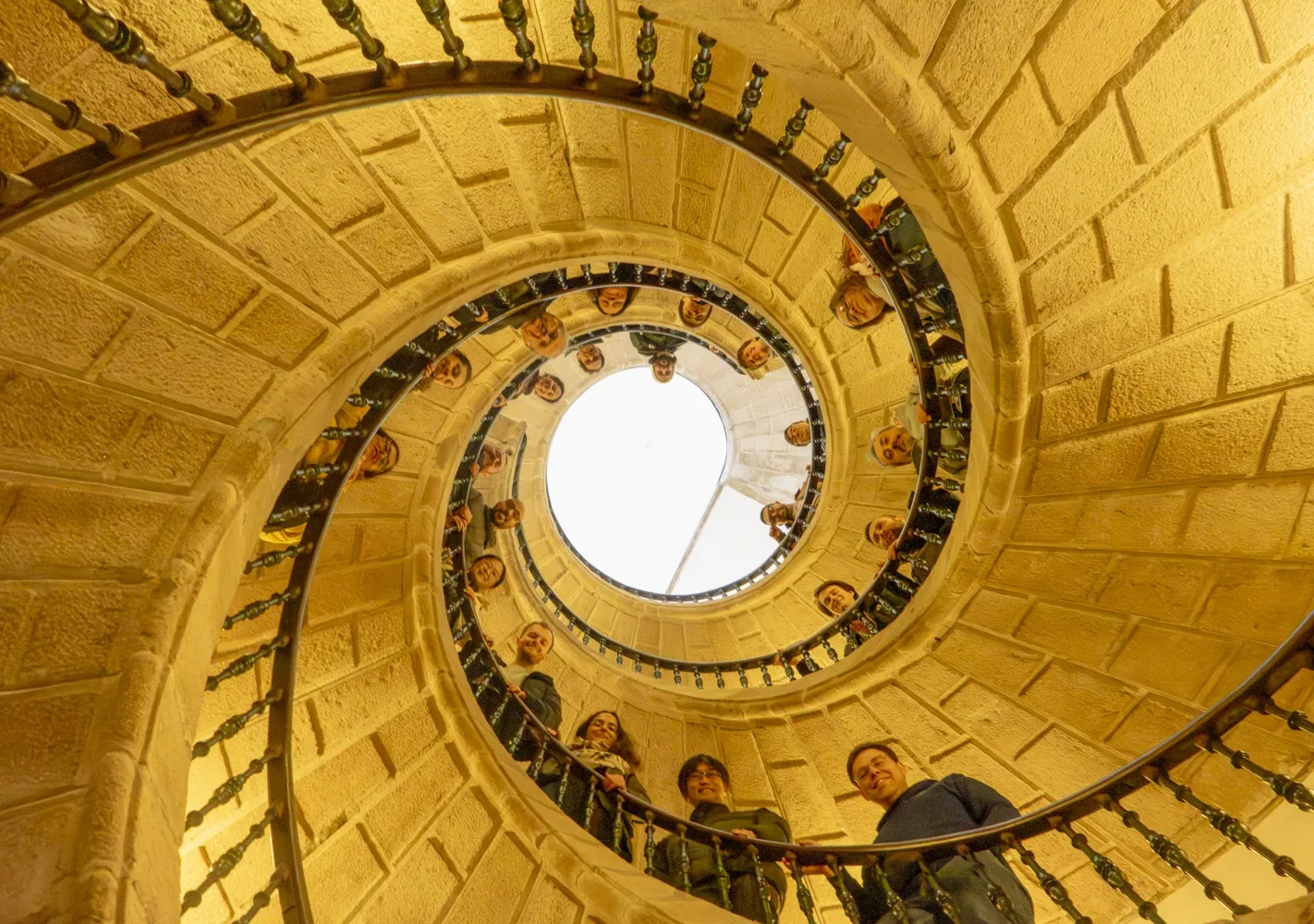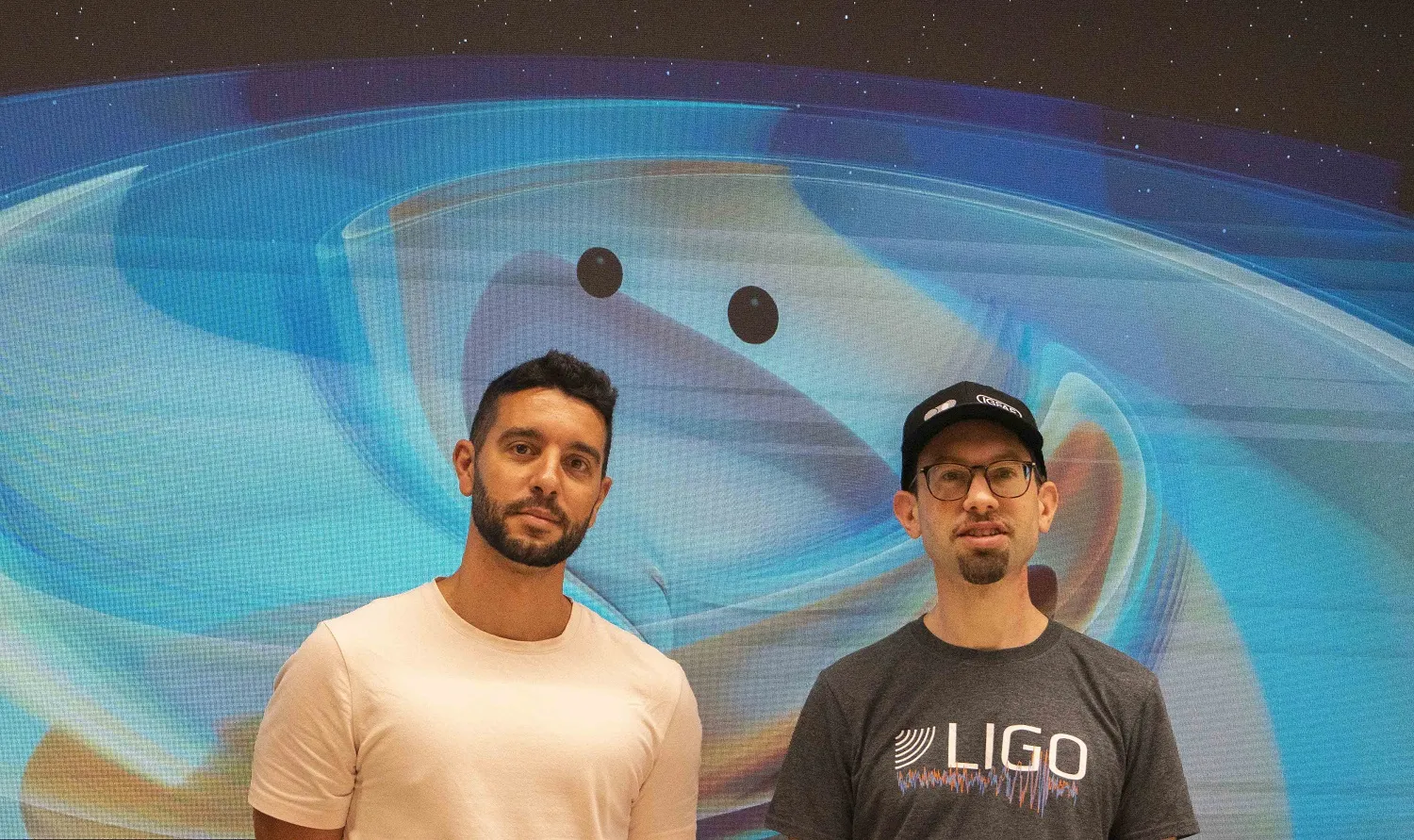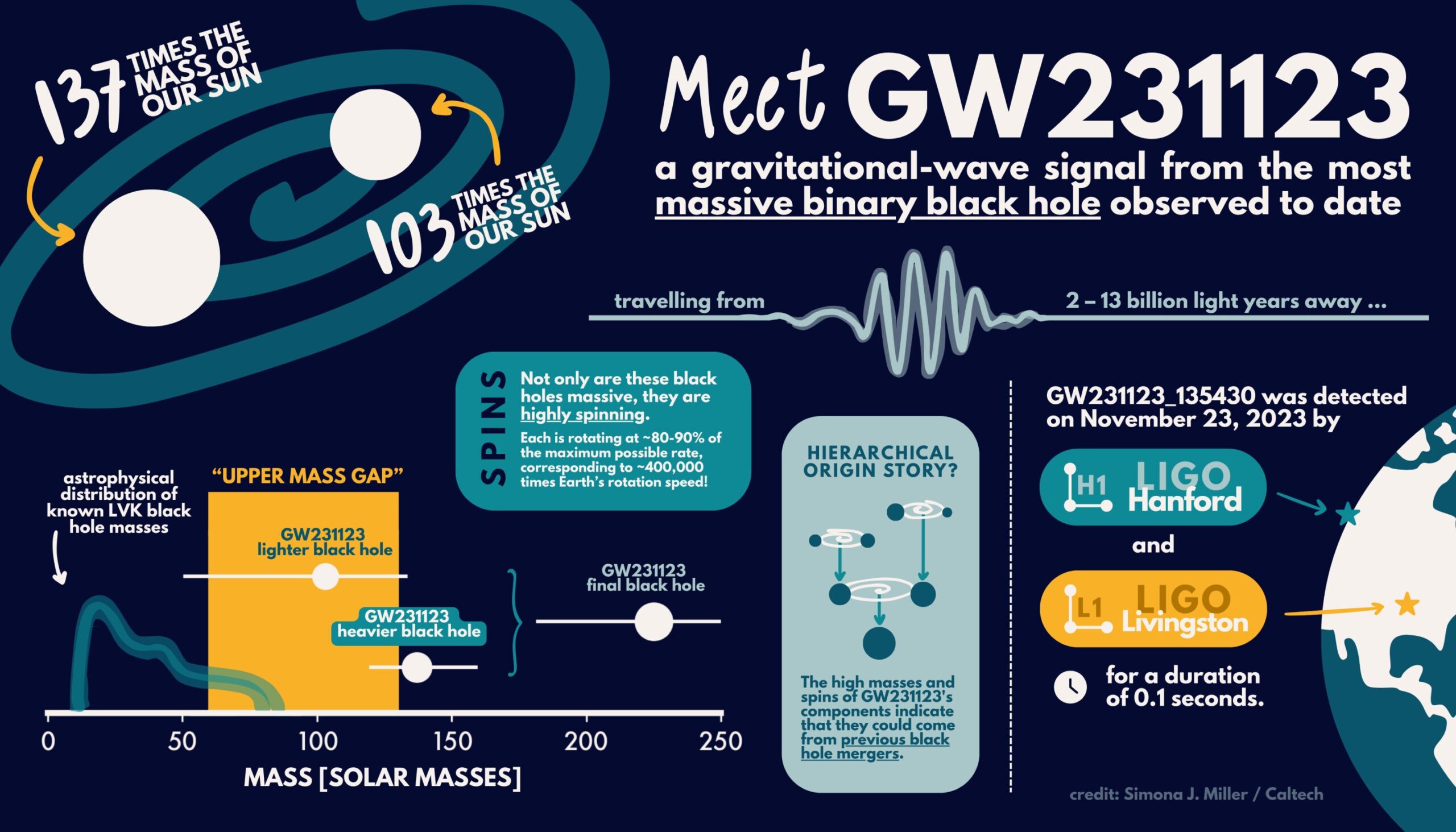IGFAE hosts an international meeting on the development of solenoidal spectrometers



14.07.2025

On November 23, 2023, after millions of years traveling through the universe, a signal in the form of gravitational waves reached Earth. It was detected simultaneously by the observatories in Hanford and Livingston, more than 3,000 kilometers apart in the United States. But this signal, named GW231123, was not just another one: it was caused by the most powerful black hole collision humanity has ever observed.
This Monday, after nearly two years of analysis, the LIGO collaboration — in which the Instituto Galego de Física de Altas Enerxías (IGFAE) participates, alongside the Virgo and KAGRA collaborations — announced the discovery of this “record-breaking” cosmic event. The result of this merger of two black holes, weighing about 100 and 140 times the mass of our Sun, is a new object of 240 solar masses. The characteristics of this event place it near the limits of what is allowed by Einstein’s theory of general relativity.
“This is the most massive black hole merger we’ve detected through gravitational waves, and its interpretation provides both a major clue and a major challenge for our understanding of black hole formation processes,” says Dr. Juan Calderón Bustillo, Ramón y Cajal researcher at IGFAE, a joint center of the University of Santiago de Compostela and the Xunta de Galicia.
So far, approximately 100 black hole mergers have been observed via gravitational waves. The largest had been the one known as GW190521 — discovered in 2019 — with a significantly smaller total mass: “only” 140 times the mass of the Sun, whose analysis was led by Calderón Bustillo. “Now we’ve broken our own record, nearly doubling the mass!” he highlights.
In addition to their enormous mass, these two black holes are spinning rapidly on their own axes. These two aspects make this signal uniquely challenging to interpret and suggest a complex formation history.
“In principle, black holes like these shouldn’t be able to form from the collapse of stars at the end of their lives. Therefore, it’s possible that these two black holes resulted from successive previous mergers of smaller black holes,” explains Juan Calderón Bustillo. This is where one of IGFAE’s main contributions to the discovery lies: techniques developed by the Institute’s team, which have already been used in recent studies to understand the origin of such events.
“With these techniques, we’ve been able to reconstruct the genealogy of these black holes. We found that the larger one is very likely a ‘third-generation’ black hole — meaning that, at best, its ‘grandparents’ would have formed from stellar collapse.”

The large mass and rapid spin of the black holes in the GW231123 signal push to the limit both the algorithms used for gravitational wave detection and the theoretical models that allow for their interpretation. Detecting such massive systems requires sophisticated techniques, the development of which IGFAE has led over the past five years.
“Signals from systems like GW231123 are extremely short and easily confused with artificial signals that continuously contaminate our detectors,” explains Dr. Thomas Dent, Distinguished Researcher at IGFAE since 2018 and founder of its gravitational wave research program.
“One of our main lines of work is the development of complex techniques to rule out artificial signals. This allows us to optimize the sensitivity of our detection systems,” says Dent. “In fact, the PyCBC system we developed here was the one that provided what we call the ‘quick alert’ that something had been detected.” Ultimately, extracting precise information from the signal required theoretical models that capture the complex dynamics of rapidly spinning black holes.
In the future, the IGFAE team will continue refining their analyses and improving the models used to interpret these extreme events. “It will take years to truly understand the nature of these kinds of sources,” predict Juan Calderón Bustillo and Thomas Dent.
“These types of signals often allow for multiple interpretations. While the most likely one seems to be a merger of two black holes in a circular but ‘oscillating’ orbit, future studies might reveal that it’s actually an eccentric orbit — or, as has been proposed before, perhaps we’re seeing something beyond black holes altogether,” they add.
Thomas Dent concludes, “Alongside the necessary theoretical developments, the accumulation of more observations like this will allow us to investigate much more deeply how such black holes form and how the stars that once died to give them life — or to give life to their ancestors — actually behaved.”
Gravitational waves are ripples in the fabric of space-time that travel at the speed of light, produced by the most violent events in the universe, such as black hole mergers or stellar explosions (supernovae). They were first predicted theoretically by Albert Einstein over 100 years ago, but weren’t directly observed until 2015, when the LIGO collaboration succeeded in doing so.
This achievement became one of the greatest milestones in physics in recent decades. Three of the main architects of the discovery — Kip Thorne, Barry C. Barish, and Rainer Weiss — received the Nobel Prize in Physics in 2017, among many other honors.
After receiving the María de Maeztu Unit of Excellence accreditation in 2017, IGFAE identified the great potential of gravitational wave research. This commitment made it possible for the institute to join LIGO in October 2018, where it now holds prominent positions in the experiment, which includes more than 1,500 researchers worldwide.